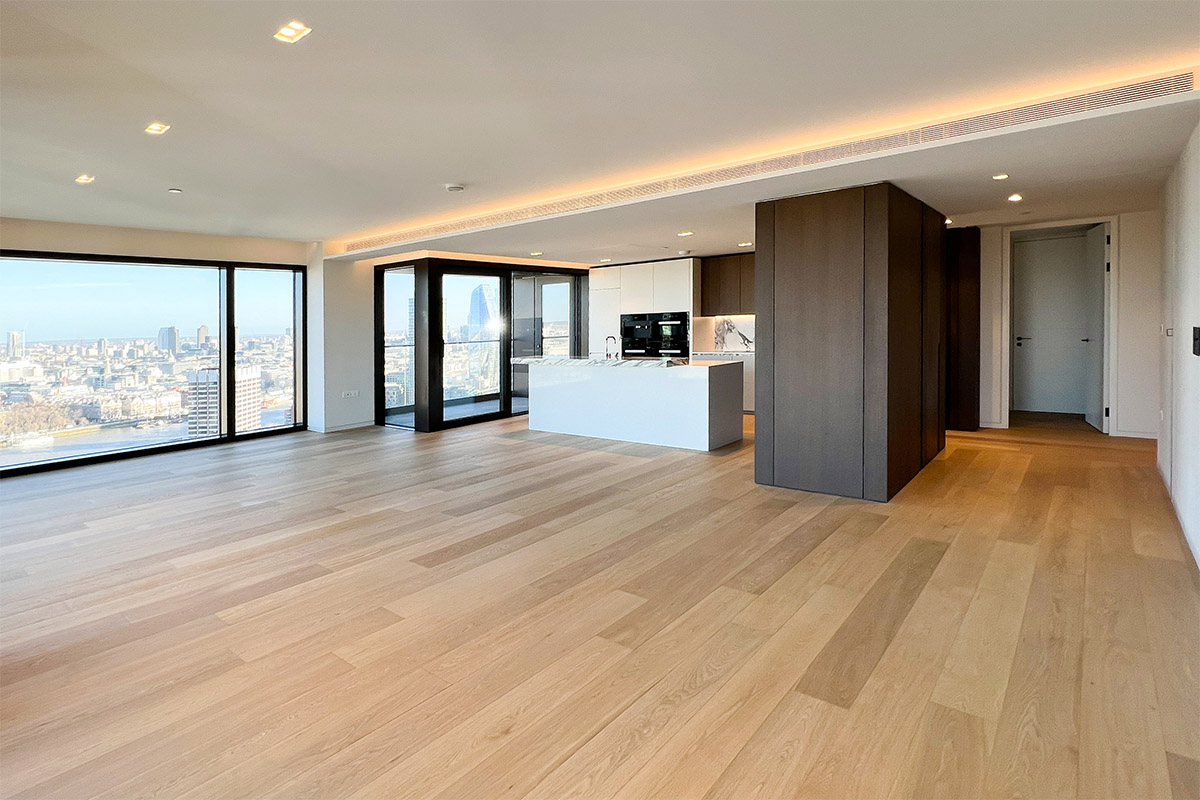London is, without question, one of the most recognisable cities in the world, famous for its incredible architecture, a broad sweep that ranges from the historical to the contemporary. With every district home to buildings from the Victorian, Art Deco, Georgian and Edwardian eras, the designs and compositions on display explore creativity, abstract thinking and symmetry in ways that are exclusive to this exceptional metropolis.
Wherever you live in the city, you’ll inevitably be close to a formidable example of either classic or modern architecture. It’s part of what makes spending time here so memorable, and, with that in mind, this is our guide to some of the capital’s most impressive and indelible landmarks.
An unmistakable part of the London skyline, The Shard is one of the capital’s most beloved destinations and it’s not hard to see why. Designed by Renzo Piano as a spire-like sculpture emerging from the River Thames, this legendary 72-story tower is the UK’s tallest building and the seventh highest in Europe. Piano was previously best known for co-creating the Pompidou Centre in Paris and has a reputation for innovation and originality, something The Shard’s distinct appearance has come to epitomise. With an exterior of 11,000 reflective glass panels, the colours on display here change from moment to moment. A triumph for the ages.

A definitive example of both old and new, Tate Modern was designed by the legendary architect Sir Giles Gilbert Scott, who also masterminded Battersea Power Station and Waterloo Bridge. Once London’s Bankside Power Station, it stood disused from 1981 to 2000, when it was converted by Swiss architects Herzog and Meuron, who created a contemporary art space whilst maintaining the building’s remarkable historical features. Since then it’s gone on to become the most visited museum of modern art on the planet, whilst its iconic chimney stands as a counterpoint to St. Paul’s Cathedral’s dome, directly opposite. Simply spectacular.

Constructed during the Victorian era, Tower Bridge provided London’s residents with faster access to the city amidst a rapidly growing population. Designed to open to allow ships to sail the Thames, it was built by around 430 construction workers between 1886 and 1884. And despite 40,000 crossing the bridge daily, priority is still given to ships, meaning that when one arrives everyone has to wait! Meanwhile, two glass walkways were added in 2014. Forty-two metres above the water, the views across the city are truly without equal. A monument to all that’s best about the city.

The Globe Theatre was built in 1599 on the banks of the Thames by Shakespeare’s playing company The Lord Chamberlain's Men. Designed in the style of the Colosseum in Rome, it’s a hugely impressive open-air theatre that heavily influenced future Elizabeathen theatres, otherwise known as amphitheatres. Shakespeare was a part-owner of the building, paying a full £10 for his share. Constructed entirely of English oak, this authentic 16th-century edifice remains one of the capital’s most iconic destinations. Needless to say, seeing one of Shakespeare’s plays performed here is a unique experience, destined to linger long in the memory.

A Grade II listed building, Battersea Power Station is one of the city’s best-known industrial images, originally created in the 1930s by the world-famous architect Sir Giles Gilbert Scott. Decommissioned in 1983, it’s since been reopened, an incredible restoration project that includes a series of brand new apartments, a shopping centre, a cinema and a food hall. Most importantly, the exterior has been perfectly preserved, whilst the original control rooms have been fully restored. Visitors can even take a one-of-a-kind glass elevator to the top of the northwest chimney, all part of an immersive experience celebrating this historic London location.
The Royal Observatory - home to Greenwich Meantime - is a stunning achievement, part of the National Maritime Museum. Commissioned in 1675 by King Charles II, the observatory was designed by Sir Christopher Wren on the site of a medieval watchtower. The home of British astronomy, it was from here that the great scientists of the day mapped the stars in order to navigate the seven seas. Located within glorious Greenwich Park, a visit to the observatory is a must for anyone visiting or living in London. It’s here that the very concept of global time was established, making this slice of living history a one-of-a-kind experience that comes highly recommended.




















